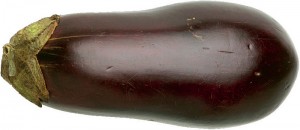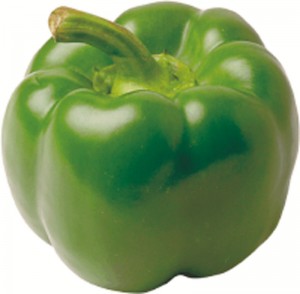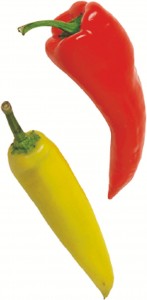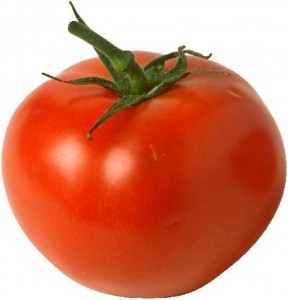Fruiting vegetables ( Crop Group 8 ) includes peppers, tomato, and eggplant production. Mostly in the Lower Rio Grande Valley, High Plains, and Far West Texas. Asterisks indicate representative crops for the Group.
 Eggplant. Transplanted and grown in 200 to 600 acres for local sales; production similar to tomatoes. Increasing as a specialty crop for restaurant trade. New varieties are more slender and tender. Numerous virus problems on foliage and fruit which reduce yields and quality (such as tomato spotted wilt virus). Insect pests include armyworms, leaf hoppers, leaf miners, Colorado potato beetle, and white flies. Weeds include annual grasses and broadleaves. Diseases include TSWV (tomato spotted wilt virus) anthracnose, damping off, powdery mildew, leaf spot, fruit rot, early blight, and nematodes.
Eggplant. Transplanted and grown in 200 to 600 acres for local sales; production similar to tomatoes. Increasing as a specialty crop for restaurant trade. New varieties are more slender and tender. Numerous virus problems on foliage and fruit which reduce yields and quality (such as tomato spotted wilt virus). Insect pests include armyworms, leaf hoppers, leaf miners, Colorado potato beetle, and white flies. Weeds include annual grasses and broadleaves. Diseases include TSWV (tomato spotted wilt virus) anthracnose, damping off, powdery mildew, leaf spot, fruit rot, early blight, and nematodes.
 Pepper – bell. Sweet or mild peppers are grown in major vegetable production areas of Texas; direct-seeded and transplants. Green bell peppers are the most common but other colors are orange, pimento, purple, red and yellow. Bell peppers released from Texas A&M breeding program have genetic resistance to several viruses. Insect pests include armyworms, flea beetle, leaf miner, pepper weevil, aphids, white fly, and leaf hoppers (vector viruses). Weeds include nutsedge, purslane, and summer annuals, Diseases include many viruses, root rot, southern blight, damping off, powdery mildew, and bacterial leafspot.
Pepper – bell. Sweet or mild peppers are grown in major vegetable production areas of Texas; direct-seeded and transplants. Green bell peppers are the most common but other colors are orange, pimento, purple, red and yellow. Bell peppers released from Texas A&M breeding program have genetic resistance to several viruses. Insect pests include armyworms, flea beetle, leaf miner, pepper weevil, aphids, white fly, and leaf hoppers (vector viruses). Weeds include nutsedge, purslane, and summer annuals, Diseases include many viruses, root rot, southern blight, damping off, powdery mildew, and bacterial leafspot.
 Peppers – non-bell or chili. Chili-type peppers are warm season annuals with various degrees of hotness in jalapeño, Serrano, cayenne, paprika and Anaheim types in Texas. Tremendous genetic variation and diversity in size, shape, capsicum/heat content, and color. Limited production of pimento (red) types. Texas ranks third in U.S. Production is in several areas but mostly in Far West Texas under contract. Grown with irrigation and in rotation with cotton and other crops. Chili pepper production in New Mexico is similar. May be marketed as fresh, dried, or processed. Processed by Pace Foods at San Antonio and Old El Paso. Pest problems are similar to those of bell peppers.
Peppers – non-bell or chili. Chili-type peppers are warm season annuals with various degrees of hotness in jalapeño, Serrano, cayenne, paprika and Anaheim types in Texas. Tremendous genetic variation and diversity in size, shape, capsicum/heat content, and color. Limited production of pimento (red) types. Texas ranks third in U.S. Production is in several areas but mostly in Far West Texas under contract. Grown with irrigation and in rotation with cotton and other crops. Chili pepper production in New Mexico is similar. May be marketed as fresh, dried, or processed. Processed by Pace Foods at San Antonio and Old El Paso. Pest problems are similar to those of bell peppers.
 Tomato*. Once a 100,000 acre crop in East Texas for green pack sales and in LRGV for tomato paste but now 1,000 and 2,200 commercial acres; 90% for local fresh market and roadside sale, mostly in St. Augustine, Cherokee, and Van Zandt counties in East Texas on 1 to 4 acre plantings. Emphasis is on quality since many growers sell to grocery warehouses or roadside sales. Mostly red slicer types but some cherry and roma (paste) tomatoes. Insect pests include fruitworms, cutworms, stink bugs, tomato pin worms, white fly, aphids, armyworms, leaf hopper, and leaf miners. Weeds include summer annuals; diseases include viruses, bacterial canker, anthracnose, Fusarium and verticillium wilts, early and late blight, southern blight, root knot nematode (major limiting factor), damping off, mildews, and bacterial leaf spot.
Tomato*. Once a 100,000 acre crop in East Texas for green pack sales and in LRGV for tomato paste but now 1,000 and 2,200 commercial acres; 90% for local fresh market and roadside sale, mostly in St. Augustine, Cherokee, and Van Zandt counties in East Texas on 1 to 4 acre plantings. Emphasis is on quality since many growers sell to grocery warehouses or roadside sales. Mostly red slicer types but some cherry and roma (paste) tomatoes. Insect pests include fruitworms, cutworms, stink bugs, tomato pin worms, white fly, aphids, armyworms, leaf hopper, and leaf miners. Weeds include summer annuals; diseases include viruses, bacterial canker, anthracnose, Fusarium and verticillium wilts, early and late blight, southern blight, root knot nematode (major limiting factor), damping off, mildews, and bacterial leaf spot.
| Crop | Statewide Production | Acreage by Production Region | ||||||
|---|---|---|---|---|---|---|---|---|
| Acres | Dollar Value per Acre | Total Value (dollars in thousands) | Lower Valley | Winter Garden | Plains Region | Far West Texas | Eastern Areas | |
| Eggplant | 500 | $3,500 | $1,750 | 200 | 100 | 0 | 0 | 200 |
| Pepper – bell | 3,900 | $3,400 | $13,260 | 400 | 500 | 1,700 | 1,000 | 300 |
| Pepper – chili | 6,000 | $3,100 | $18,600 | 400 | 400 | 2,200 | 2,700 | 300 |
| Tomato* | 2,000 | $1,400 | $2,800 | 400 | 100 | 500 | 0 | 1,000 |
| Totals | 12,400 | $2,936 | $36,410 | 1,400 | 1,100 | 4,400 | 3,700 | 1,800 |
